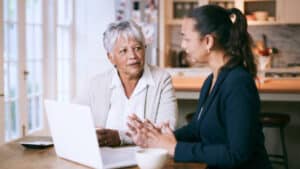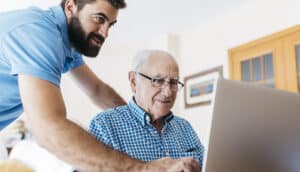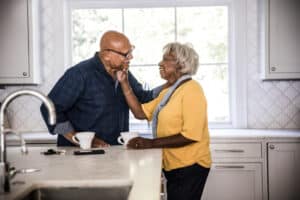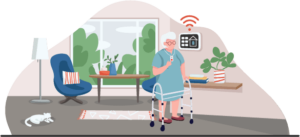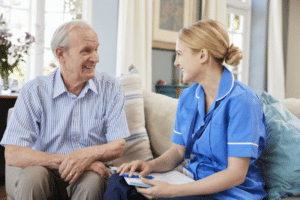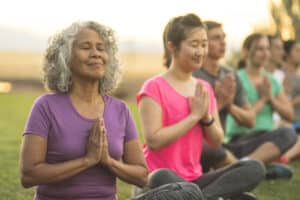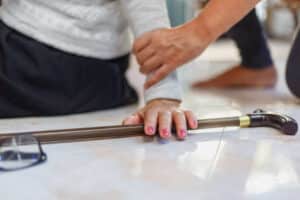
Accidents such as slip and fall accidents are a leading cause of injury among the elderly.
Multiple causes, including poor health and environmental dangers, increase the likelihood of slipping or falling. Muscle weakness, difficulty jogging, poor balance, and other mobility issues are dangerous.
Understanding the factors contributing to slip and fall incidents among older people is crucial for addressing this pressing problem and developing appropriate responses.
The article dives deep into how to best prevent slip & fall accidents with seniors. We will provide ten effective guidelines for senior safety, providing essential insights and practical recommendations on decreasing the hazards connected with slips and falls.
10 Tips To Prevent Slip and Fall Accidents among Seniors
Older people are more prone to slip-and-fall incidents. In addition to causing serious injuries, these accidents often undermine elders’ sense of security and independence when moving about.
By following some tips, it is possible to prevent slip and fall accidents with seniors. The top 10 tips are:
1. Ask for Assistance When Needed
When elders first stand up, they often experience dizziness and unsteadiness. Before getting up and around, give yourself a few moments to rise up gently.
A walking aid like a cane or walker to lean on may make it easier to go about. When going for a walk outdoors, it may be necessary. Talking to a physical or occupational therapist may help you choose which aid will be the most beneficial.
The wellness of older people is a constant concern for those with old relatives. That means avoiding any hazardous situations they may find themselves in. Accidents can sometimes seem too strange or out of place. Any Personal Injury Lawyer in Virginia Beach can help you with this kind of legal issue if you see any accident of a senior member of your family that does not look natural.
2. Keep Moving and Be Active
Regular exercise is another strategy for lowering the possibility of falls. The risk of falling may be reduced by engaging in low-intensity activities and workouts, such as water training sessions, walking, balancing exercises, and basic physical activity.
To boost the energy levels of seniors, exercising is an excellent approach. Endorphins are neurotransmitters connected to a sensation of psychological well-being and pain reduction, and the body may produce them in response to any kind of activity. Sleeping well, feeling less tension, and having more energy are all benefits of endorphins.
Exercising is good for seniors, no doubt. If there are any elderly in your house, you should encourage them to exercise regularly. But before you make them start doing any kind of exercise, you should make sure your doctor gives them the okay. Your doctor might suggest the best workouts for your present fitness level.
3. Make Your House More Accessible
It’s important to make your house more user-friendly as you age. Make sure the features of your home encourage safety and help you avoid falls so that you may go about your day without incident. To prevent trips and falls, you should, for instance, fasten any loose carpeting with slip-resistant backing. A non-slip mat placed next to the tub is another option.
Arrange your furniture so there are no obstructions in the paths you often use. Clear the walkways of any decorations or extraneous items.
4. Ensure Enough Lighting
Seniors need good lights to feel safe in their surroundings. Without enough light, it can be hard to see barriers and possible dangers. Make sure the house is well-lit everywhere, especially the stairs, halls, and doors.
If you need to be seen at night, you might want to use lights with motion sensors or nightlights. Though personal injury laws can protect seniors, it is better to be prepared and proactive about preventing any accident.
5. Non-Slip Flooring
Choosing the right flooring can make it much less likely that someone will slip and fall. Choose flooring that won’t slip, like a carpet with a low pile or mats with a rubber backing. This is especially important in high-risk places like bathrooms and kitchens. Check the floors often for signs of damage or wear, and fix or replace them right away if you find any.
6. Get Your Eyes Examined
Getting your eyes checked every two years is recommended for optimal eye health. However, elderly and adult patients at higher risk must schedule these sessions more often. Annual eye exams are recommended for those 65 and older. If you have eye problems that might cause you to slip or fall, it’s important to update your prescription regularly.
7. Strengthen Your Bones
Older people are more likely to shatter a bone if they fall because their bones are more fragile. To prevent this, maintain bone health and strength by boosting calcium intake and taking vitamin and mineral supplements. Your bones may benefit from all of these in the long term.
Milk, sardines, and cheese are all good sources of calcium. Vitamin D is essential for healthy bones because it helps the body absorb calcium from the food you eat. Fish such as tuna, salmon, and yolks are good examples of foods that naturally contain vitamin D. You may also boost your bone health and reduce joint discomfort by adding a cod oil supplement to your daily routine.
8. Use Proper Footwear
The risk of injury from a fall increases when wearing shoes that are too loose, too short, or too open in the rear. When wearing high heels, you risk tripping and walking more gingerly.
Wear shoes with nonslip rubber soles and low heels to avoid injury. You may also minimize the potential for slips and falls by opting for shoes with non-skid bottoms or shoes with flat soles, which will make walking on stairs and other surfaces easier and safer.
9. Remember Your Medications
See your doctor immediately if you’re having any adverse drug reactions or trouble making track of your prescriptions, and have your medication list checked if you acquire a new prescription. To keep track of when you take your medications, you may either keep a notebook or utilize a timed pill dispenser.
Discuss with your doctor before using any over-the-counter drugs, including pain relievers, that include sleep aids. It’s because these drugs might make you dizzy and affect your equilibrium. Talk to your doctor about safer options if you’re having trouble sleeping.
10. Set Senior Friendly Bathroom Equipment
Slip-and-fall accidents often happen in the bathroom. Install grab bars near the toilet, shower, and bathroom to give you support and steadiness. Use non-slip mats or sticky strips in the shower or bathroom to avoid falling. Use a higher toilet seat and a shower chair to make things easier and safer.
Conclusion
It is necessary to take a proactive and all-encompassing approach to senior citizens’ living environments and personal well-being to reduce the risk of elders slipping and falling, which may lead to serious injuries.
When you know how to prevent slip & fall accidents with seniors, you can considerably minimize the chance of seniors falling, improving their overall safety and quality of life.
